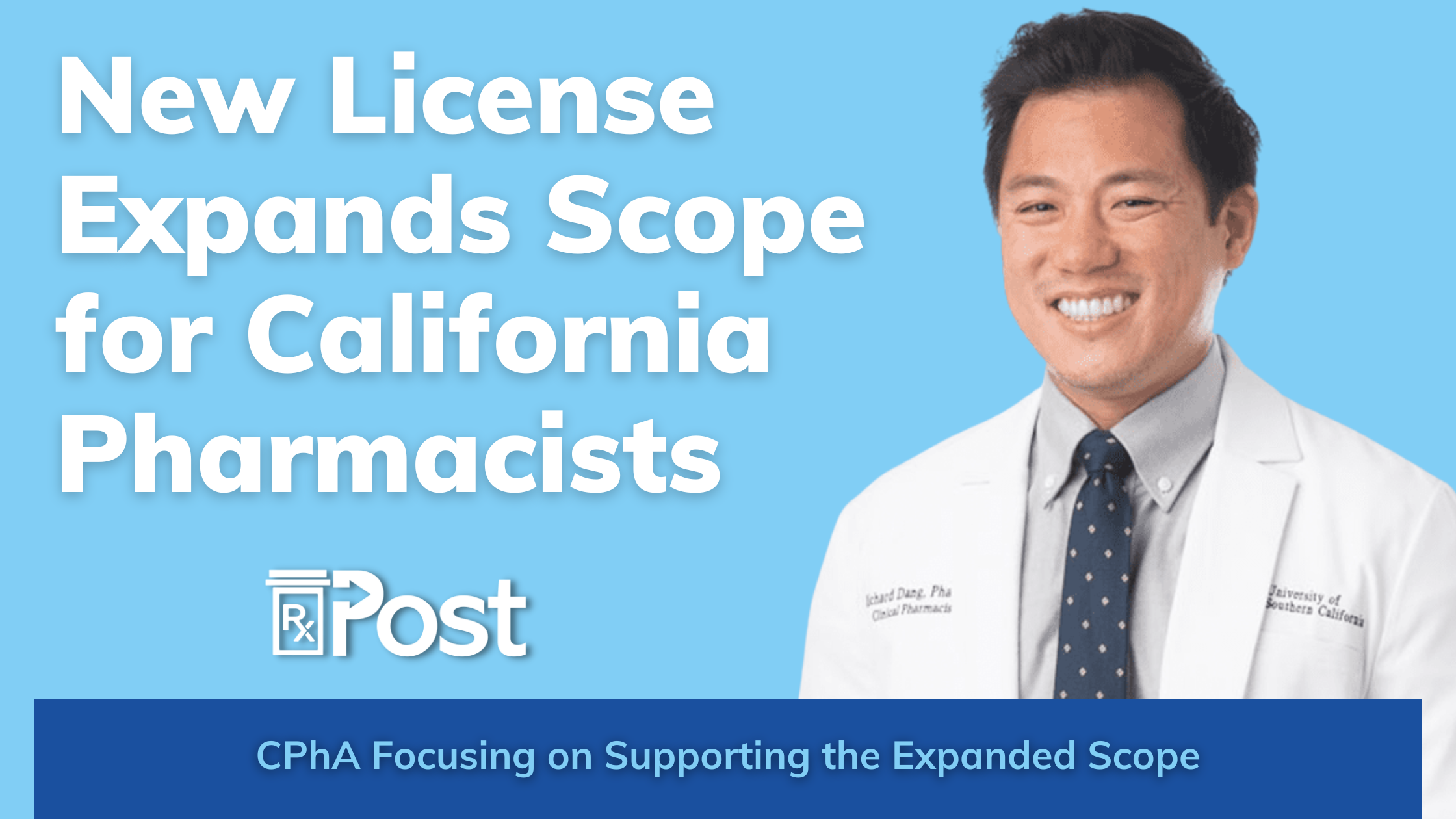Pharmacists in California are gaining the ability to perform more and more clinical services, boosted in part by the success they’ve had administering tests and vaccines during the COVID-19 pandemic.
Beginning this year, the scope of authority that the state allows has been expanded. Some activities are allowed for all registered pharmacists in the state, while others can be provided through collaborative practice agreements with other medical professionals, and others can be performed by pharmacists who obtain an advanced practice license.
[Read more: Colorado: A framework for protocols]
“Over the last I think five years, a lot of states, including California, have done a really great job at expanding the services that pharmacists can provide,” said Richard Dang, president of the California Pharmacists Association.
With respect to pharmacists’ ability to administer many vaccines, HIV pre-exposure and post-exposure prophylaxis, naloxone, smoking cessation, and hormonal contraception, California is on par with many other states, he said, and in fact has been a leader in some of those practices.
“I think that really puts California ahead of many other states in the sense that it allows licensed advanced practice pharmacists to be able to have that independent authority to initiate, adjust and modify drug therapy, without the restriction of collaborative practice agreements.”
-Richard Dang, president of the California Pharmacists Association
The scope of authority that pharmacists have been granted under the new advanced practice license sets the state apart, however.
“I think that really puts California ahead of many other states in the sense that it allows licensed advanced practice pharmacists to be able to have that independent authority to initiate, adjust and modify drug therapy, without the restriction of collaborative practice agreements,” Dang said.
In order to obtain an advanced practice license, California pharmacists must meet two of three eligibility criteria, which include completing a PGY1 residency program (a 12-month, post-graduate advanced training series), providing clinical services to patients for at least one year under a collaborative practice agreement or protocol or completing an approved certification program.
[Read more: Idaho: The least regulated state]
Reimbursement for many pharmacy services remains a challenge, however, and the CPhA is working on expanding the services that the state Medicaid plan, Medi-Cal, will cover. Although the list of pharmacy services that Medi-Cal covers has expanded in recent years, Dang said pharmacists in the state are seeking more coverage. “That’s definitely something that is on our legislative agenda for future cycles,” he said.
In the meantime, the CPhA is focusing on supporting the expanded scope that has become available to advanced practice pharmacists.
Scope of practice
- All registered pharmacists are able to provide prescription medications for a variety of conditions or disease states, including emergency contraception, birth control, nicotine replacement products, international travel medications, HIV pre-exposure and post-exposure prophylaxis (PrEP and PEP), and naloxone and administer all approved vaccinations. Pharmacists are also able to order and interpret drug-related laboratory tests and perform several point-of-care CLIA-waived tests;
- Pharmacists also can enter into collaborative practice agreements with medical care providers, with no explicit restrictions on what can or cannot be done; and
- Advanced practice pharmacists can perform patient assessments, order and interpret drug therapy-related tests in coordination with a patient’s primary care provider or diagnosing prescriber to monitor patient progress, refer patients to other healthcare providers, participate in the evaluation and management of diseases and health conditions in collaboration with other healthcare providers, and in accordance with a protocol with a physician or facility, a pharmacist can initiate, adjust and discontinue drug therapy upon referral from a patient’s treating prescriber when necessary and medically appropriate.
This article was originally published on Drug Store News here.


